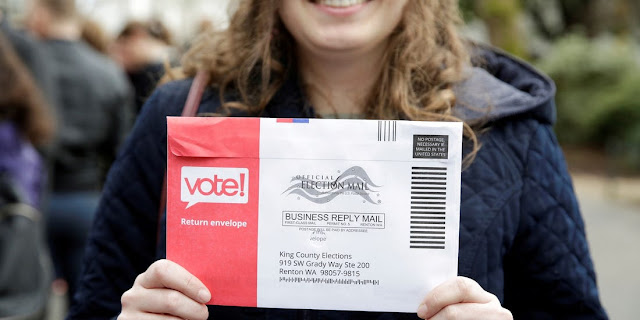The Impact of Mail-In Voting on Young Voters
President Donald Trump’s recent actions regarding the USPS, as well as his statements indicating he won’t be providing aid to them to stop mail-in voting from occurring, has catapulted the topic of disenfranchised voters into the spotlight over the past few months. Undoubtedly, removing the ability to vote by mail will effectively disenfranchise thousands of voters across the United States and prevent them from having their voices be heard. Young people will be one of the most affected groups in this decision.
Recent data shows that young voters rely on mail-in voting more than the most age demographics in the United States. Forbes reports that 22.5% of 18 to 24-year-olds voted by mail-in 2018, which is greater than any other age group aside from those 65 and up. Moreover, their report also details that in 2016, a record-breaking 50% of the total votes cast were early or by mail. This number has only increased recently, as Wisconsin saw 70% of their voters vote by mail-in their April 2020 election. A Center for Information and Research study also found that states who have universal mail-in voting programs had the highest youth voter turnout. The 18 to 29 age bracket overwhelmingly has the highest migration rate, often from moving to pursue education or job opportunities while keeping their permanent residence and the state citizenship of where they grew up.
New data also suggests that young voters are more motivated to vote than ever before. NBC News recently reported on a poll conducted by the Center for Information and Research that shows 83% of youth voters believe they can change the country and 60% believe they belong to a movement where they will vote to express their views. The poll also reports that 79% of those voters state that the pandemic made them realize that politics affect their lives. With the steady increase of interest in politics from younger voters, we must provide them the means to cast their votes.
Clearly, Trump’s sentiments on mail-in voting aren’t shared as widely as they were in the past. Originally reported by Crooked Media, a study conducted by Data For Progress found that 55% of voters support a policy that would automatically provide a vote by mail option, with only 25% opposing the policy and 20% were unsure. Furthermore, they detail that this is a drastic increase from a study conducted in 2018 by Pew Research, where 65% of voters disliked the idea of only being able to vote by mail. This drastic increase could be caused by a number of factors, but it’s safe to assume that the global pandemic is one of the most pressing.
An important issue to note here, however, is that some youth voters are unaware of how they can cast their absentee or mail-in ballots for this upcoming election. Michigan Live details that some students at Western Michigan University are unsure how to register to vote in the upcoming election, citing confusion around using their school address or home address. Additionally, they note that some students are unfamiliar with the US postal service and have little to no experience with sending mail. NPR analyzed a poll performed by NextGen America and found corroborating data, as 50% of voters interviewed under 35 stated that they are unable to obtain the resources or are unaware of how to vote by mail.
We must develop new strategies to allow students and young people who rely on absentee and mail-in voting to be heard. Forbes calls for campuses to utilize social media to provide information on how to register, create short clips to demonstrate how to vote by mail, host virtual office hours to answer questions and provide further demonstrations, host a virtual party to promote voting by mail and connect with students via email or text to keep them informed and updated on how to vote by mail. In addition to these steps, we must also provide as much of these resources as possible to the public so that young voters who aren’t currently attending school may access them too. These actions must be taken quickly so young people can cast their ballots early to ensure it arrives before their state cutoff date. Educating young voters about their voting options is not specific to this election amid a pandemic, but for every election that follows in which, young voters will face the same challenges of absentee voting. Voting by mail has never been more important than it is right now and we must act immediately.


Comments
Post a Comment
Let your knowledge, ideas, and innovation be heard. Tell us what you think and know about this topic.